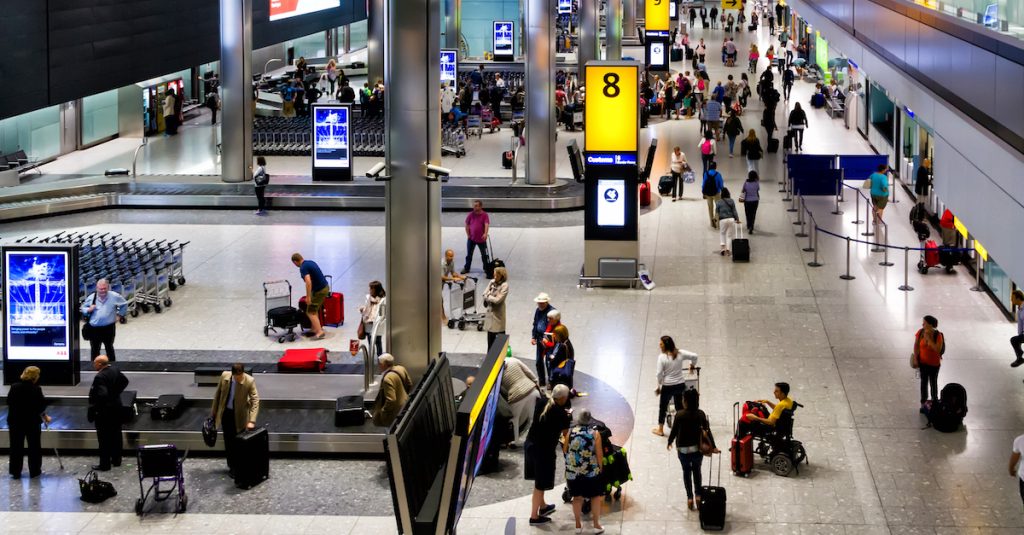Heathrow Airport has set new benchmarks in passenger throughput this July, reinforcing its preeminent status in Europe.
Despite facing complex challenges like the Electronic Travel Authorisation, Heathrow’s operational efficiency shines through in its recent successes.
Heathrow’s Record-Breaking July
In July, Heathrow Airport experienced an unprecedented surge in passenger numbers, marking a significant milestone. The airport recorded a staggering throughput of nearly eight million passengers, maintaining its position as Europe’s busiest airport. This impressive performance surpasses previous records, especially notable during the peak weeks when more than 1.8 million passengers utilised the airport weekly. The airport’s strong collaboration with its partners has played an instrumental role in managing this flow smoothly, without any significant disruptions from global IT outages or protests.
The achievement of setting new records in July underscores Heathrow’s resilience and competitive edge within the European aviation market. This thriving period saw a flurry of activity, with six of the busiest departure days coinciding with the commencement of summer holidays in England. Despite challenges, Heathrow’s operational efficiency ensured seamless travel experiences for millions, renewing confidence in its capacity to manage increased passenger volumes.
Challenges Faced Due to Electronic Travel Authorisation
The introduction of the Electronic Travel Authorisation (ETA) system has posed a considerable challenge for Heathrow. Since its implementation in 2023, the airport has witnessed a decrease of 90,000 transfer passengers. This reduction highlights the need for a prompt governmental review of the policy, a sentiment echoed by Heathrow’s management in their appeal for reconsideration of airside transit passenger measures.
The loss incurred due to the ETA’s introduction has been described as ‘devastating’ for the hub’s competitiveness. Heathrow Airport has strongly urged the government to re-evaluate the impact of the ETA on airside transit passengers, emphasising the importance of competitiveness in driving national economic growth.
Impact on Destination Popularity
Venice and Larnaca emerged as popular destinations among travellers this summer. Heathrow also noted significant growth in routes to Doha and Dublin, alongside the consistently busy New York JFK route, which collectively served over a million passengers.
These routes, coupled with American city destinations like Orlando, Chicago, San Francisco, Boston, and Dallas, contributed to the airport’s robust passenger figures. This surge reflects a growing interest in both European and transatlantic travel, fostering economic benefits for associated regions.
Heathrow’s Executive Insights
Heathrow’s Chief Executive, Thomas Woldbye, shared valuable insights into the airport’s accomplishments. He commended the collective efforts of the team in overcoming potential setbacks, which could have hindered their operational targets. The goal of serving over eight million passengers in a single month is within reach, he highlighted, attributing this success to concerted teamwork and strategic foresight.
Woldbye described the month as ‘medal-winning’, acknowledging a record-breaking daily increase in passenger numbers. His statement reinforces the optimism within Heathrow’s leadership, despite obstacles that surfaced during the period.
Collaborative Efforts with Partners
Close partnerships have been vital in Heathrow’s successful navigation of a busy summer period. By working in sync with various stakeholders, the airport managed to address many challenges that arose during this time. These partnerships were key in maintaining an operational flow, ensuring customer satisfaction amidst high passenger volumes.
It is evident that effective coordination between airlines, ground staff, and other airport services was central to the seamless travel experiences reported by passengers. Such synergistic efforts are essential, particularly during peak travel seasons, to mitigate issues and maintain service quality.
Future Prospects Amid Regulatory Challenges
The integration of the ETA highlights ongoing regulatory challenges facing Heathrow and the wider aviation sector. While intended to streamline security processes, the system’s implementation has inadvertently affected passenger numbers.
In addressing these regulatory hurdles, Heathrow remains committed to lobbying for policies that blend security with passenger facilitation. As the airport projects growth, aligning operational goals with regulatory frameworks will be crucial in sustaining its position in the global market.
In summary, Heathrow’s remarkable achievements in July demonstrate its resilience and operational capability amidst evolving challenges. The airport’s continued focus on enhancing passenger experiences, coupled with advocating for favourable policies, positions it as a key player in Europe’s aviation sector.
Heathrow’s ability to navigate regulatory changes while achieving record passenger numbers underscores its strength in the aviation industry.
Looking ahead, the airport’s proactive approach to policy advocacy and collaboration with stakeholders will be pivotal in maintaining its competitive edge.

